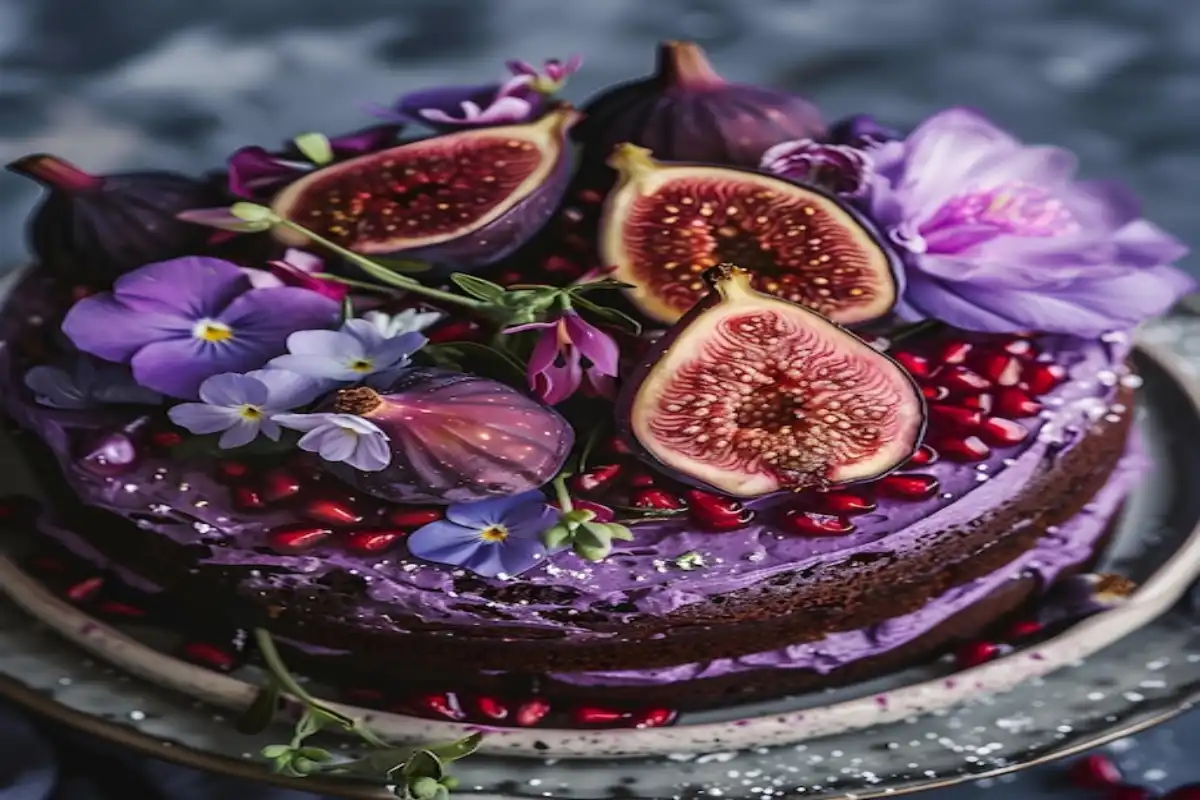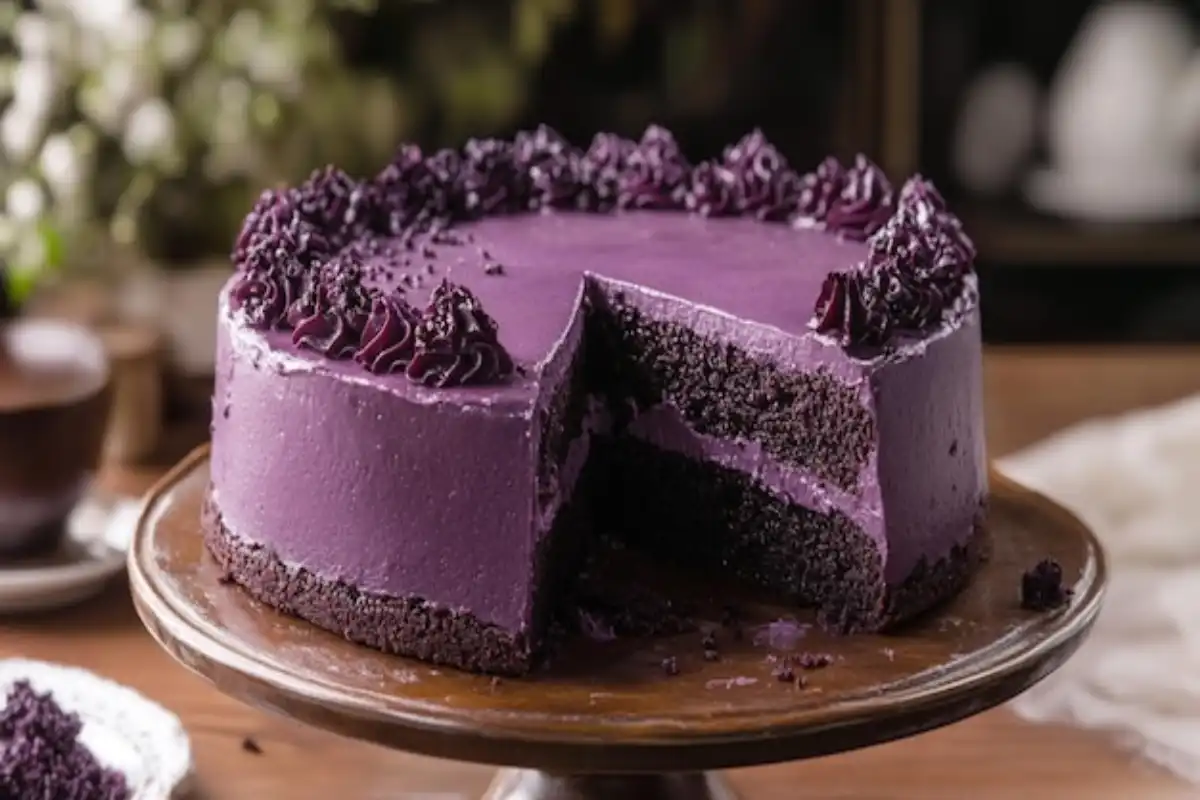Purple velvet cake is a delightful twist on the traditional velvet cakes, known for their rich textures and vibrant colors. The distinctive hue and unique flavor make purple velvet a favorite among cake enthusiasts and bakers alike. This comprehensive article will delve into the origins, ingredients, flavor profile, variations, and much more regarding purple velvet cake, providing you with an in-depth understanding of this delicious dessert.
Introduction
The popularity of purple velvet cake has surged in recent years, captivating both the eyes and taste buds of cake lovers everywhere. This cake not only stands out visually but also offers a complex flavor profile that intrigues those who encounter it. Understanding what flavor is purple velvet goes beyond merely tasting it; it involves examining its ingredients, how it compares to other cakes, and how it can be adapted in various ways.
In this article, we will explore the essence of purple velvet cake, starting from its ingredients and flavor comparisons to recipes and FAQs. Whether you’re an avid baker or someone curious about this unique dessert, this guide will serve as your go-to resource.
Understanding the Flavor Profile
Definition of Flavor
Flavor is a multifaceted sensory experience that combines taste, aroma, and mouthfeel. While taste refers to the sensations detected by our taste buds—such as sweetness, bitterness, sourness, saltiness, and umami—flavor encompasses a broader range of sensory inputs, including olfactory and tactile sensations. The interplay between these elements creates a unique experience when enjoying foods, particularly baked goods like purple velvet cake.
When tasting purple velvet cake, several factors contribute to its overall flavor profile:
- Aroma: The smell of the cake plays a crucial role in how we perceive its flavor. Ingredients like cocoa powder and vanilla extract add inviting aromas that enhance the overall experience.
- Texture: The cake’s moisture and crumb contribute to its mouthfeel, making it soft and tender—a characteristic feature of velvet cakes.
Common Ingredients in Purple Velvet Cakes
The ingredients used in purple velvet cakes are vital for achieving both flavor and texture. Here’s a breakdown of the primary components:
- All-Purpose Flour: This is the base of the cake, providing structure and stability.
- Granulated Sugar: Sugar not only sweetens the cake but also contributes to its moisture and tenderness.
- Cocoa Powder: A key ingredient that introduces a subtle chocolate flavor, complementing the sweetness.
- Baking Soda and Baking Powder: These leavening agents ensure the cake rises properly and achieves a light texture.
- Salt: Salt enhances the flavor and balances the sweetness of the cake.
- Vegetable Oil: This adds moisture to the cake, helping to create a tender crumb.
- Buttermilk: Adds acidity, contributing to the cake’s moisture and tanginess.
- Eggs: Essential for binding the ingredients together and adding richness.
- Vanilla Extract: A classic flavor enhancer that complements the other ingredients.
- Food Coloring: The defining feature of purple velvet, giving it its vibrant color. Commonly, this is achieved using artificial food coloring, though natural alternatives like beet juice can also be used.
The Role of Food Coloring
While food coloring is often seen as a visual enhancement, it does not significantly affect the cake’s flavor. However, the perception of flavor can be influenced by color; our brains often associate certain colors with specific tastes. In the case of purple velvet, the vibrant color may suggest a fruitier flavor, particularly when paired with complementary frostings or fillings.
Flavor Comparisons
Purple Velvet vs. Red Velvet
At first glance, purple velvet and red velvet cakes may appear similar, but they offer distinct flavor profiles. Red velvet cake is characterized by its mild cocoa flavor and the tanginess derived from buttermilk and cream cheese frosting. Conversely, purple velvet often introduces a lighter and sometimes fruitier flavor, particularly when it incorporates additional ingredients like berries or floral notes.
Similarities:
- Both cakes feature a moist texture and a velvety crumb, achieved through the careful selection of ingredients and the use of oil and buttermilk.
- They both typically use cocoa powder, although purple velvet often relies on the color of the food dye for its unique appearance.
Differences:
- The primary difference lies in their flavors and visual appeal. Purple velvet often has a more nuanced taste, especially when paired with specific frostings, making it a versatile choice for various occasions.
Other Velvet Cakes
The velvet cake family includes several other variations, each with its unique characteristics:
- Black Velvet Cake: This variation typically incorporates dark cocoa powder, resulting in a richer chocolate flavor that can be enhanced with various frostings, such as chocolate or cream cheese.
- Blue Velvet Cake: Often made with blue food coloring, blue velvet can feature flavors such as vanilla or blueberry, providing a unique twist on the classic velvet texture.
Each of these variations offers a different flavor experience while maintaining the signature moistness and tenderness associated with velvet cakes.

Recipes and Variations
Classic Purple Velvet Recipe
Here’s a classic purple velvet cake recipe that captures its essence beautifully:
Ingredients:
- 2 ½ cups all-purpose flour
- 1 ½ cups granulated sugar
- 1 cup unsweetened cocoa powder
- 1 teaspoon baking soda
- 1 teaspoon baking powder
- 1 teaspoon salt
- 1 cup vegetable oil
- 1 cup buttermilk, at room temperature
- 3 large eggs
- 1 tablespoon vanilla extract
- 1 cup purple food coloring (or natural alternatives like beet juice)
Instructions:
- Preheat the Oven: Preheat your oven to 350°F (175°C). Grease and flour two 9-inch round cake pans.
- Combine Dry Ingredients: In a large bowl, whisk together flour, cocoa powder, baking soda, baking powder, and salt until well combined.
- Mix Wet Ingredients: In another bowl, combine vegetable oil, buttermilk, eggs, and vanilla extract. Mix until smooth and well blended.
- Combine Mixtures: Gradually add the wet mixture to the dry ingredients, mixing until just combined. Avoid overmixing.
- Add Color: Incorporate the purple food coloring until evenly distributed throughout the batter.
- Bake: Divide the batter evenly between the prepared pans. Bake for 25-30 minutes, or until a toothpick inserted into the center comes out clean.
- Cool: Allow the cakes to cool in the pans for about 10 minutes before transferring them to wire racks to cool completely.
This classic recipe results in a moist, flavorful cake that embodies the spirit of purple velvet.
Unique Twists on Purple Velvet
To elevate your purple velvet cake, consider experimenting with unique flavors and ingredients. Here are some ideas to inspire your creativity:
- Lavender Infusion: Adding dried lavender to the batter can introduce a delicate floral note that complements the cake’s sweetness.
- Berry Flavors: Incorporate fresh or pureed berries, such as blueberries or blackberries, into the batter for a refreshing twist that enhances the fruity aspect of the cake.
- Alternative Frostings: Instead of traditional cream cheese frosting, try using lemon buttercream or a light berry-flavored frosting to add another layer of flavor.
These variations allow you to personalize your purple velvet cake while maintaining its core essence.
Frosting Ideas for Purple Velvet Cake
Choosing the right frosting is crucial for complementing the flavor of purple velvet cake. Here are some popular frosting options:
- Cream Cheese Frosting: A classic choice, cream cheese frosting adds tanginess that pairs beautifully with the sweetness of the cake.
- Buttercream Frosting: A light and airy buttercream can balance the richness of the cake while adding a smooth texture.
- Whipped Cream: For a lighter option, whipped cream can provide a fresh taste that enhances the cake without overpowering it.
- Berry Compote: A drizzle of berry compote can introduce a fruity tang that complements the cake’s flavor while adding a pop of color.
Decorating Ideas
Presentation is key when it comes to cakes, especially with a visually striking dessert like purple velvet. Here are some creative decorating ideas:
- Edible Flowers: Use edible flowers, such as violets or pansies, to adorn the cake for a stunning visual impact.
- Fresh Berries: Garnishing with fresh berries can enhance the cake’s appearance while adding flavor.
- Chocolate Shavings: Dark or white chocolate shavings can add texture and elegance to the cake’s surface.
FAQs
What does purple velvet taste like?
Purple velvet cake typically has a rich, moist texture with a subtle chocolate flavor and a hint of sweetness. The flavor can be enhanced by the frosting used, which may introduce fruity or floral notes.
Can You Make Purple Velvet Without Food Coloring?
Yes, purple velvet can be made using natural colorings such as beet juice or purple sweet potato puree, which can impart flavor while achieving the desired hue. This approach not only enhances the cake’s visual appeal but can also add nutritional benefits.
Is purple velvet cake more popular than red velvet?
While red velvet cake has historically been more popular, purple velvet is gaining traction due to its unique flavor profile and striking appearance. As more bakers experiment with this vibrant dessert, its popularity continues to grow.
How Can I Store Purple Velvet Cake?
To maintain the freshness of your purple velvet cake, store it in an airtight container at room temperature for up to 3 days. If you need to keep it longer, consider refrigerating it, but be aware that refrigeration may slightly alter its texture.
Can I Freeze Purple Velvet Cake?
Yes, you can freeze purple velvet cake. To do so, wrap the cooled cake layers tightly in plastic wrap and then in aluminum foil to prevent freezer burn. It can be stored in the freezer for up to 3 months. When ready to enjoy, allow the cake to thaw in the refrigerator overnight before serving.
What Occasions Are Suitable for Purple Velvet Cake?
Purple velvet cake is versatile and can be served at various occasions, including birthdays, weddings, anniversaries, and even themed events. Its vibrant color makes it a great choice for celebrations that embrace unique and bold aesthetics.
Are There Gluten-Free Variations of Purple Velvet Cake?
Yes, gluten-free versions of purple velvet cake can be made by substituting all-purpose flour with gluten-free flour blends. Ensure that all other ingredients, including cocoa powder and baking powder, are also gluten-free.
The Cultural Influence of Velvet Cakes
The rise of velvet cakes can be attributed not only to their flavors but also to the cultural contexts in which they emerged. Traditionally, velvet cakes have been associated with Southern cuisine in the United States, where the rich, moist texture and sweet flavor resonate with comfort food ideals. The unique use of buttermilk and cream cheese frosting in red velvet cakes showcases the Southern tradition of incorporating regional ingredients for flavor and texture.
As purple velvet cake gained popularity, it began to appear in various culinary contexts. The unique color and flavor make it an appealing choice for celebrations, attracting both traditionalists and those looking for modern twists on classic desserts.
The Future of Purple Velvet Cake
As more people discover the joys of baking and decorating, the future of purple velvet cake looks bright. The cake’s versatility allows for countless variations and adaptations, encouraging bakers to experiment with flavors, textures, and presentations. Additionally, as the food industry continues to emphasize natural ingredients, we may see a rise in natural color alternatives for purple velvet, providing a healthier and more sustainable option.
Conclusion
In conclusion, purple velvet cake is a delightful fusion of rich flavors, moist textures, and striking colors that captivate both bakers and dessert lovers alike. Its unique flavor profile, which often combines subtle chocolate notes with fruity or floral undertones, sets it apart from traditional velvet cakes. The versatility of purple velvet cake allows for endless possibilities in terms of recipes, frostings, and decorations.
Whether you’re looking to impress guests at a celebration or simply indulge in a delicious dessert, purple velvet cake is an excellent choice. As you embark on your baking journey, remember to embrace your creativity and explore the myriad flavors and styles that make purple velvet cake a cherished dessert.
